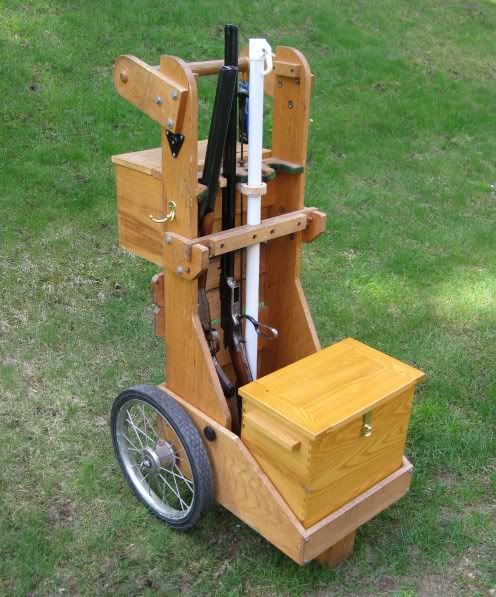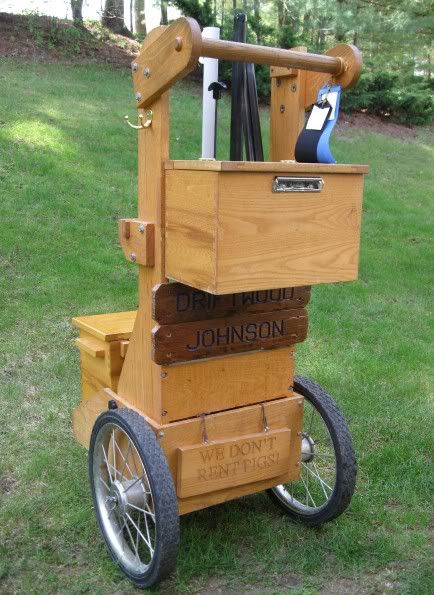Driftwood Johnson
New member
Ash is hard, dense, but not terribly flexible. For gun stocks, it is heavy, homogeously puke colored, and looks like hammered ugly when you sand it and stain it.
Why in the world would you want to stain ash? As a professional woodworker I used to tell my customers that if you want a dark wood, go with mahogany or walnut.
When coated with satin lacquer or polyurethane, ash is beautiful. It has strong grain that is highlighted by a good finish.
This is my CAS guncart that I made of ash about ten years ago. The nameplates are not ash, they were made from pallet wood by a machinist friend who used to like to make up boards like this on his CNC miller.



